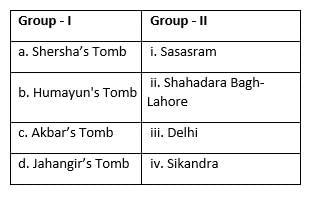UGC NET Paper 2 Sociology Mock Test - 8 - UGC NET MCQ
30 Questions MCQ Test - UGC NET Paper 2 Sociology Mock Test - 8
The nearly universal norm for marriage in all societies is?
Eco-feminism is a theoretical perspective that addresses the connection between gender and nature. Which one of the following statements correctly explains the eco-feminism perspective?
| 1 Crore+ students have signed up on EduRev. Have you? Download the App |
_______ is a form of sampling in which the population is divided into a number of strata or subgroups and a sample is drawn from each division.
Which of the following punishments cannot be awarded to the violators of a norm?
Whose name is closely associated with the concept “Development Communication” ?
Who has classified groups into ‘dyad’ and ‘triad’?
Who has stated that the conflict is dysfunctional, if the structures are rigid?
Who amongst the following says that sociology is the study of collective representation?
National Initiative On Climate Resilient Agriculture was launched by which of the following?
Transformation of Human Societies from agrarian to industrial and to post-industrial has widely been shaped by:
When was the Prohibition of Child Marriages Act came into effect?
Match the following:

The correct answer is:
One aspect of E-governance deals with flow of information between the Government and citizens. Which of the following are Government to Citizens G2C initiatives?
(a) e-Help
(b) e-Health
(c) e-Tendering
(d) e-Feedback
Choose the correct option from those given below:

















